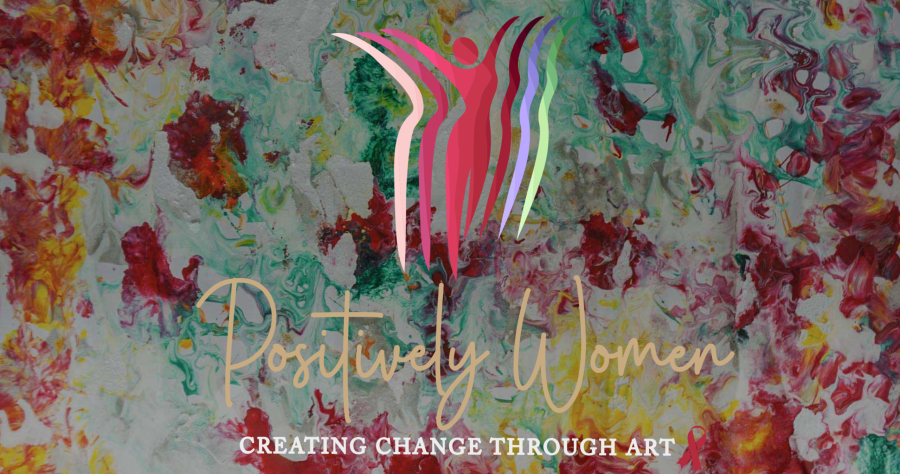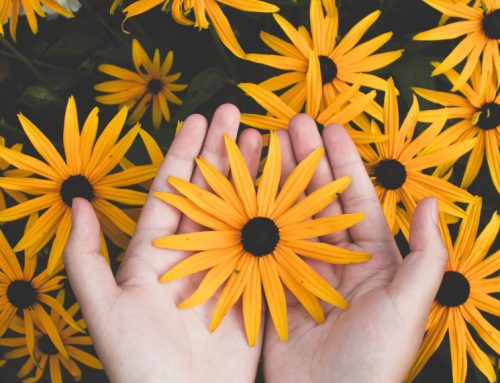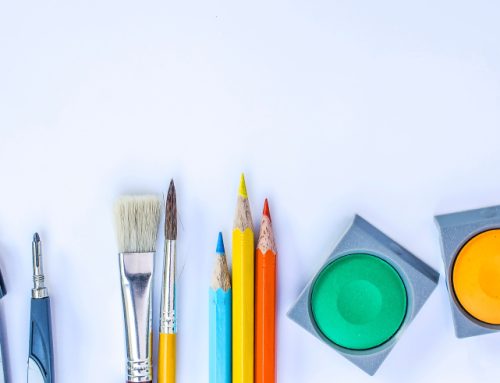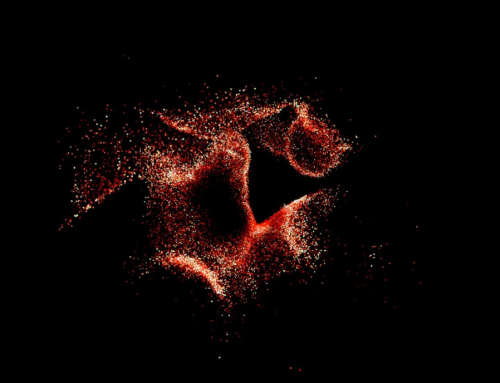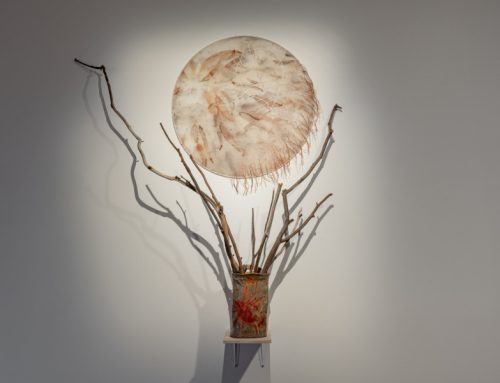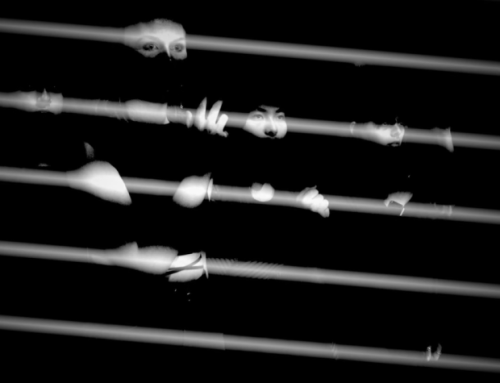Dr Patricia Morgan is a researcher at the University of New South Wales, currently working at the Kirby Institute. She had a background in fine and community arts, community development and education and currently works in academic and contract research. A contemplative practitioner, Patricia brings together her interests in contemplative art and inquiry, consciousness studies and learning, the arts and arts-based research, in the Meditative Process Art Method used to produce the art works currently exhibited in the Positively Women online exhibition. She worked with Dr Allison Carter, Jane Costello, colleagues at UNSW, the Positively Women community advisory board and ten Australian women living with HIV, to create the online art exhibition, which celebrates the lives of women living with HIV. Below, Patricia discusses the value of the project, her Meditative Process Art Method, and the importance of arts-based research.
A “process” journey: four workshops to celebrate the lives of women living with HIV
The Positively Women project started at the beginning of 2020. Originally, we were going to do a weekend workshop, but then COVID-19 struck. So instead, we did four weeks, 3 hours a week, of online workshops with ten women from across Australia. We began in Week 1 with introductions where the women experimented with the art and meditation practices, and started to get to know each other. Building trust and community is really important in this kind of work, because the aim is for participants to work out of an internal or pre-conceptual consciousness.
Week 2 was about creating and using symbols. In particular, we focused on symbols that represented strength and pleasure. Learning to create symbols is useful because they convey a lot with a small amount of visual information. They were also helpful because some of the material in the workshop could have been triggering. As the “power symbols” that the women created embodied positive affect, they were helpful in sections of the workshop that may have felt triggering.
Week 3 was about reworking the past. There’s been quite a lot of negative imagery about HIV in the past. I’m old enough, for example, to remember the “grim reaper” campaign. While it’s described as an incredibly successful advertising campaign, it caused an incredible amount of harm to people living with HIV. In Week 3, we asked the women to send in imagery from the past, such as copies of posters they’d seen in healthcare settings or their own photographs, and probably about 4 out of 10 women sent in images of the grim reaper. This was probably one of the most powerful weeks, because people really got to explore and push back, in images and words, against the stigma and shame they’d experienced. The idea of reworking negative imagery comes from the modern art world, which we discussed in the workshop using the work of artists such as Brook Andrews and Betty Tompkins.
In Week 4, the artists combined all they had been experimenting with to create a final self-portrait. These different elements included basic art techniques such as colour mixing, using textures and words, and creating and using symbols. The final works were very powerful, beautiful and at times humorous.
Meditative Process Art Method: Creating a visual schema of the inner worlds of women living with HIV
The Meditative Process Art Method combines both meditation and process art, which is a practice from the traditional art world. In this practice, artists focus on the process of using art materials and their inner experience, rather than the creation of an artistic product. Process art values chance occurrence and unintentional outcome, which can be seen in the work of Jackson Pollock, a well-known proponent of this genre. The Meditative Process Art Method is also influenced by Jungian psychology and humanistic psychology, which expanded on Jung’s theories by including somatic and affective experience. This has been brought into creative arts therapy and to transpersonal arts theory, both of which add contemplative practice to the mix.
The meditation used in this method helps practitioners move into the interior space, which contains memories, emotions, somatic experiences, and psychological material. Interior or pre-conceptual consciousness is pre-verbal, so difficult to articulate in words. That’s where art practices such as symbol-making can be very useful. Describing inner experience through art offers a way for the practitioner to express what they have felt internally, fixing or solidifying the experience. The artwork then remains as a schema of the practitioners’ inner experience.
It’s helpful to understand the artworks in the exhibition as schemas of the artist’s internal worlds, rather than comparing them to art works from the traditional art world. None of the women had training in the arts, and some of the mediums and practices were new to them. This means that their works can look quite naïve compared to what you might see in a gallery. But when you view their art works as diagrams of their internal worlds, within the context of healing and change, it is easy to understand why they are important.
Pedagogically, the Meditative Process Art method relies on scaffolding from educational theory, in which the student moves from preliminary to complex exercises or concepts. That’s how the four weeks of workshops are structured: first introductions to colleagues and the practices, then learning art practices such as symbol making and becoming more familiar with meditation, and finally combining all these elements. In the workshops this happened in the last week, where the women created a final self-portrait using all they had learnt in the preceding weeks.
The efficacy of the Meditative Process Art Method comes from iterative cycles of reflection, creation, realization, and application, facilitated by rounds of meditation, creative practice and story-telling. At the end of these cycles, images and poetry which are personally meaningful to the practitioner are produced. These outcomes then act as a reminder of the experience, which helps cement any change that occurred. By applying this method over the four weeks of the workshop, many positive changes occurred. Some of the main ones were increased peer support and community, increased agency, and the release of negative affect, and trauma.
To read more about the Meditative Process Art Method, please click here: The Meditative Process Art Method.
Collective stories about living with HIV and experiencing the workshop
Findings from the workshops, which formed the first part of our two-part study, can be found under the tab “Themes” in the online exhibition. Although the themes are interrelated, we have divided them into two parts for ease and clarity. The themes are, “Living with HIV” and “Experiences of the Workshop.” The themes section takes the viewer through what we found by analysing data from workshop discussions and one-on-one interviews with the artists. The “Experiences of the Workshop” section describes how the method worked, starting with relaxation, moving to heightening somatic awareness, trust and community building, through to the development of personally meaningful symbols, and the solidifying in drawing and words artists’ inner experience. In the second section, “Living with HIV,” findings related to the women’s experiences of stigma, loneliness and for some living a double life, reproductive autonomy and coercion, and realizations that they are more than HIV.
Second Stage of Data Collection, “Looking Deeply”
In the Positively Women research project we started with two research questions. The first asked, “Does doing this work help people?” And we can unequivocally say that it does, for the reasons that I’ve outlined. The second research question asks, “Does viewing this work change your understanding of life with HIV?” We are now entering the second stage of data collection, where we will ask this question across three workshops. Participants will be given a tour of the workshop, followed by a group discussion.
We’ve had two second-stage workshop trial runs, and they have gone well. The workshops start and finish with participants writing 10 lines about their understanding of life with HIV. Doing this writing practice cements ideas and feelings in language. I developed something I call Deep Looking, a practice, as it sounds, of moving inwards through gentle meditation and then taking time to look at the art works from an internal space. This is followed by drawing and writing in response to the “looking.” I developed this practice as I wanted to provide an opportunity for participants to experience some of the same practices that the artists experienced. Plus we wanted participants to access their subjective feelings about life with HIV as displayed in the exhibition. There are also more “cognitive” aspects of the tours where I talk about the art works, process art and what happened in the exhibition. I’ve chosen five art works from the exhibition which I think express important ideas and are visually strong. I take participants through Deep Looking with these works and we’ll finish by sharing this experience.
The value of an arts-based approach
Arts-based methods are fairly new to medical research. Because this type of qualitative research method isn’t as commonly used as quantitative methods, some might ask about its efficacy. I believe arts-based research has much to offer us, particularly when seeking to understand embedded beliefs and feelings. For example, in the first stage of the Positively Women project, we learnt about the continuing stigma and discrimination that women living with HIV still experience. All of the women in our group, from those diagnosed in the early 1980s to a woman diagnosed in 2016, experienced stigma and discrimination. Sadly, a lot of this happened in medical settings. We also found that the Meditative Process Art Method led to increased peer support, enhanced agency and provided a means to release suppressed negative emotion and trauma. Plus using practices that help us as researchers to engage participants’ pre-conceptual experience opens up that very fertile ground of human experience. It was also important for us that our research benefited the artists and was a meaningful experience for them. This was why we chose to conduct community and arts-based research, using meditation and process art, while co-designing the research with our participants, community advisory board, and research team.
This has been a great research experience. Having the opportunity to work with such an incredible group of women has been a great privilege and a wonderful opportunity to trial the Meditative Process Art Method. In the future, we’re hoping to turn the methods and our findings into educational kits that can be used by different communities. We’re really interested in translational research and applying what we’ve found more widely. It would also be great to bring the online exhibition and tours into medical education, and using both in diverse settings to address the stigma and discrimination that people living with HIV continue to suffer.
